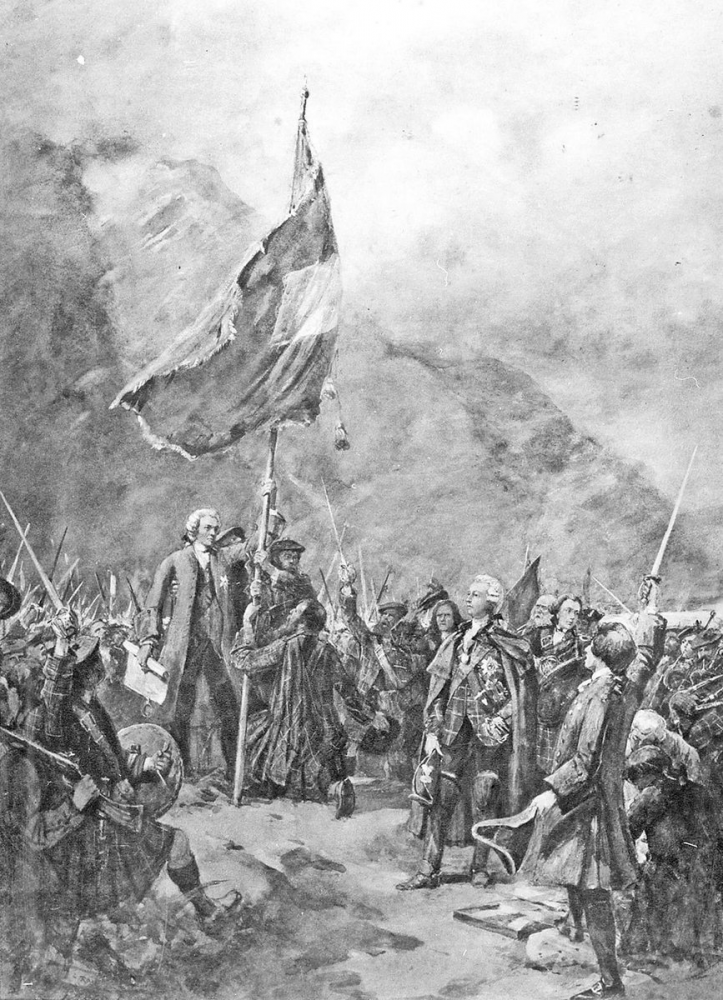
On 19 August 1745, the Jacobite standard was raised at Glenfinnan at the head of Loch Shiel in Lochaber, marking the beginning of the Jacobite Rising of 1745.
Charles Edward Stuart landed on the Isle of Eriskay in the Outer Hebrides on 23 July 1745, after sailing from France onboard the frigate Du Teillay. He had come with just seven followers in a bid to raise the Jacobite clans in a rebellion against the Hanoverian King George II and win the throne for his father, James Francis Edward Stuart, son of the deposed King James VII and II.
On the 25th, Charles sailed over to the mainland and landed at Loch nam Uamh in Arisaig before crossing over to Glenuig in Moidart. From here he travelled to Kinlochmoidart before sailing up Loch Shiel to Glenfinnan.
It was at Glenfinnan on 19 August that the Jacobite standard was raised by the Marquis of Tullibardine after it was blessed by Catholic Bishop Hugh Macdonald. The standard was purportedly a red silken flag with a white square inset, hastily sewn by the ladies of Kinlochmoidart, however, there are doubts about its appearance as no contemporary account of its description survives.
Charles made a short speech and proclaimed his father James Francis Edward Stuart as King James VIII and III, marking the beginning of the Jacobite Rising of 1745.
Despite the Jacobite clan chiefs’ great reluctance to join the rising and their insistence that Charles return to France, nearly 1,000 clansmen assembled at Glenfinnan and Charles soon had a force of around 1,800 highlanders.
Also present at the raising of the standard were a party of Royal Scots who had been captured in the first military action of the rising at Highbridge three days before.
Charles’s Jacobite army defeated government forces at the Battle of Prestonpans on 21 September 1745 and then, after being reinforced with significant numbers of lowlanders, marched into England heading for London. They got as far as Derby before they withdrew back to Scotland. They won another victory at Falkirk on 17 January 1746 but the uprising was ultimately defeated on Culloden Moor on 16 April 1746.
In 1815, Alexander Macdonald of Glenaladale erected a memorial tower at Glenfinnan to commemorate the raising of the standard and the Jacobite rising. Standing at 18 metres tall, the tower was designed by the Scottish architect James Gillespie Graham with funding for its construction partly derived from the wealth generated by slave plantations in Jamaica, which were owned by Alexander Macdonald’s father. In 1835, a statue of an unnamed highlander was added to the top of the monument by sculptor John Greenshields of Carluke.
The monument is not to be confused with the traditional site of the raising of the Jacobite standard which is on the opposite side of the River Finnan.
